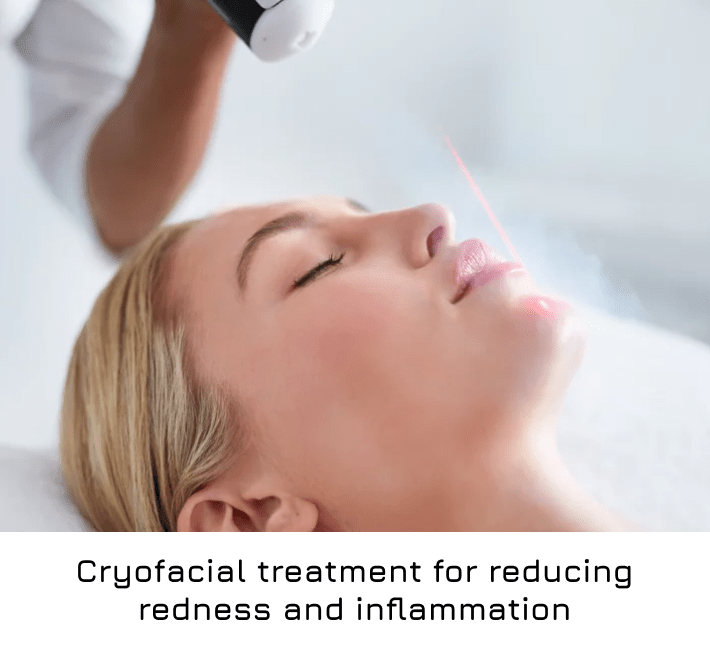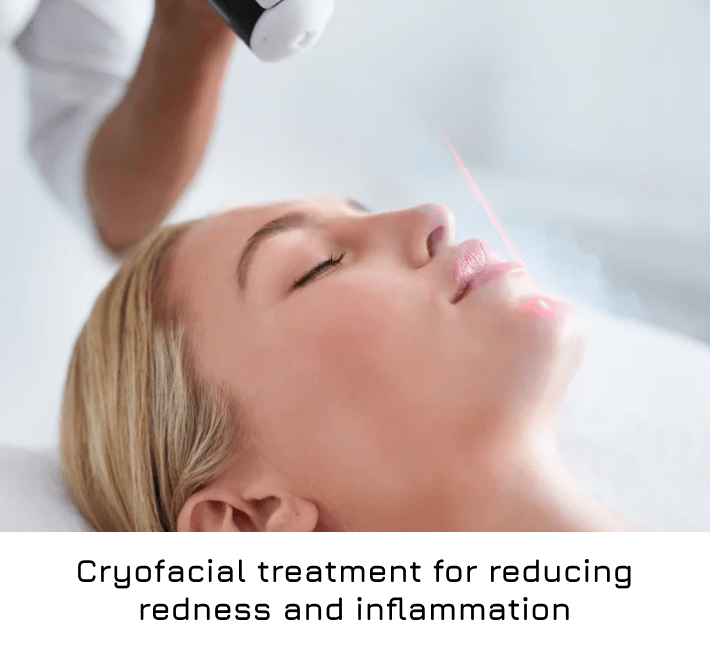Cryofacial treatment

In recent years, the beauty and wellness industry has seen a surge in innovative treatments, and one such emerging trend is cryofacial therapy. This cutting-edge procedure involves exposing the face to extremely low temperatures, aiming to reduce redness and inflammation while promoting overall skin health. In this article, we will delve into the concept of cryo-facial therapy, exploring its potential benefits and considerations.
Understanding Cryofacial Therapy
Cryo-facial therapy, also known as cryotherapy for the face, involves the application of frigid temperatures to the skin. This is typically achieved using liquid nitrogen or a specialized cryoprobe. The therapy is inspired by the broader concept of cryotherapy, which has been used for years to address various health and wellness concerns.
The Procedure
During a cryo-facial therapy session, a trained professional applies the cold treatment to the face, targeting specific areas or the entire facial surface. The cold stimulates blood circulation, tightens the skin, and constricts blood vessels, which can be particularly beneficial for reducing redness and inflammation.
Benefits of Cryofacial Therapy
Reduction in Redness: One of the primary benefits of cryofacial therapy is its potential to alleviate redness in the skin. The cold temperatures help to constrict blood vessels, reducing blood flow to the treated area and minimizing redness.
Inflammation Relief: Cryofacial therapy may offer relief from facial inflammation, making it an appealing option for individuals dealing with conditions like rosacea or acne. The cold treatment has anti-inflammatory effects that can soothe irritated skin.
Skin Tightening: The cold stimulates collagen production, promoting skin elasticity and firmness. This can result in a more toned and youthful appearance, addressing concerns related to sagging or aging skin.
Considerations and Precautions
While cryo-facial therapy has shown promise in reducing redness and inflammation, it’s essential to consider potential side effects and precautions.
Individual Responses Vary: The effectiveness of cryo-facial therapy can vary from person to person. Factors such as skin type, existing skin conditions, and overall health may influence the outcomes.
Risk of Cold Injuries: Exposure to extremely low temperatures carries the risk of cold injuries, including frostbite or skin damage. Proper training and adherence to safety guidelines are crucial for minimizing these risks.
Conclusion
Cryo-facial therapy presents an intriguing avenue for individuals seeking non-invasive solutions to reduce redness and inflammation on the face. While research is ongoing to fully understand its long-term effects, early indications suggest that this innovative approach has the potential to enhance skin health and appearance.
As with any cosmetic procedure, individuals need to consult with trained professionals, discuss their specific concerns, and weigh the potential benefits against the risks. Cryo facial therapy might be the chill answer for those looking to put their best face forward in the quest for radiant and calm skin.
